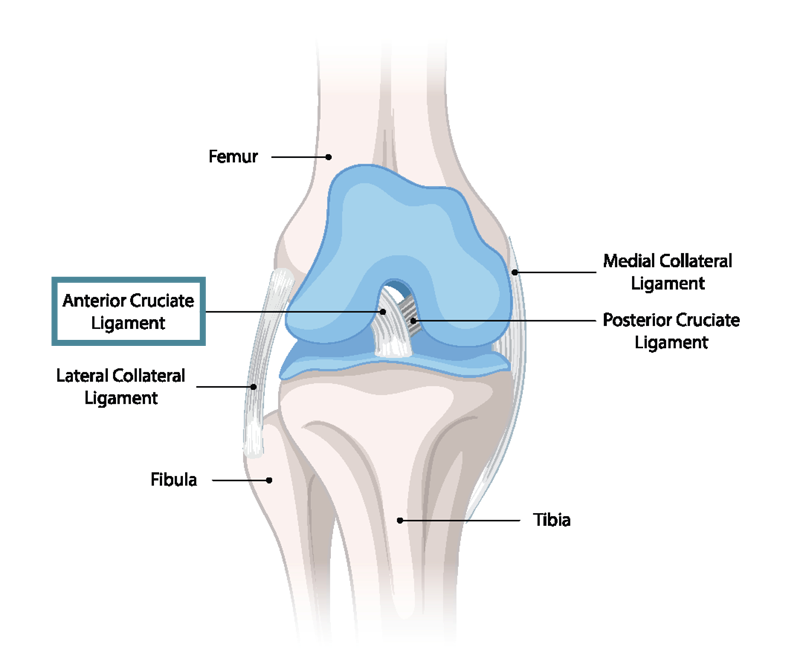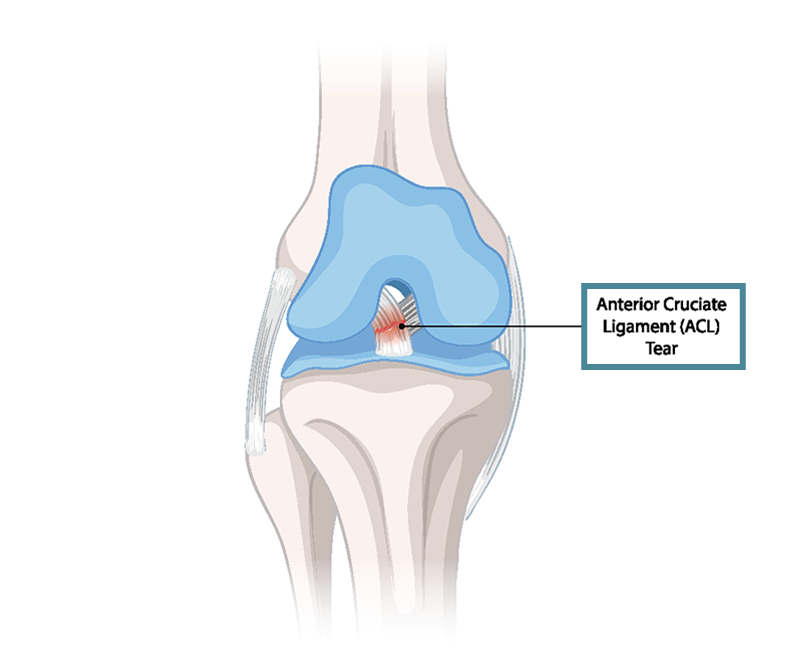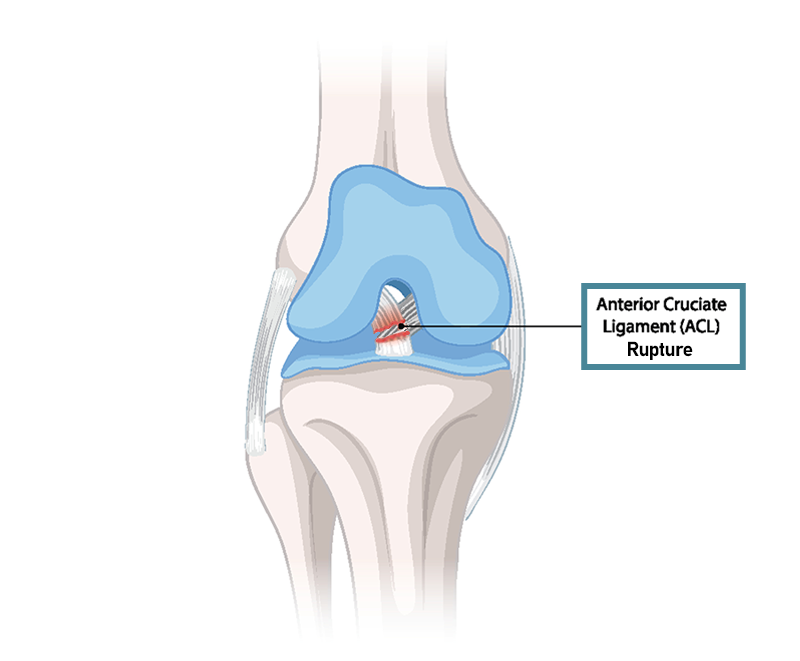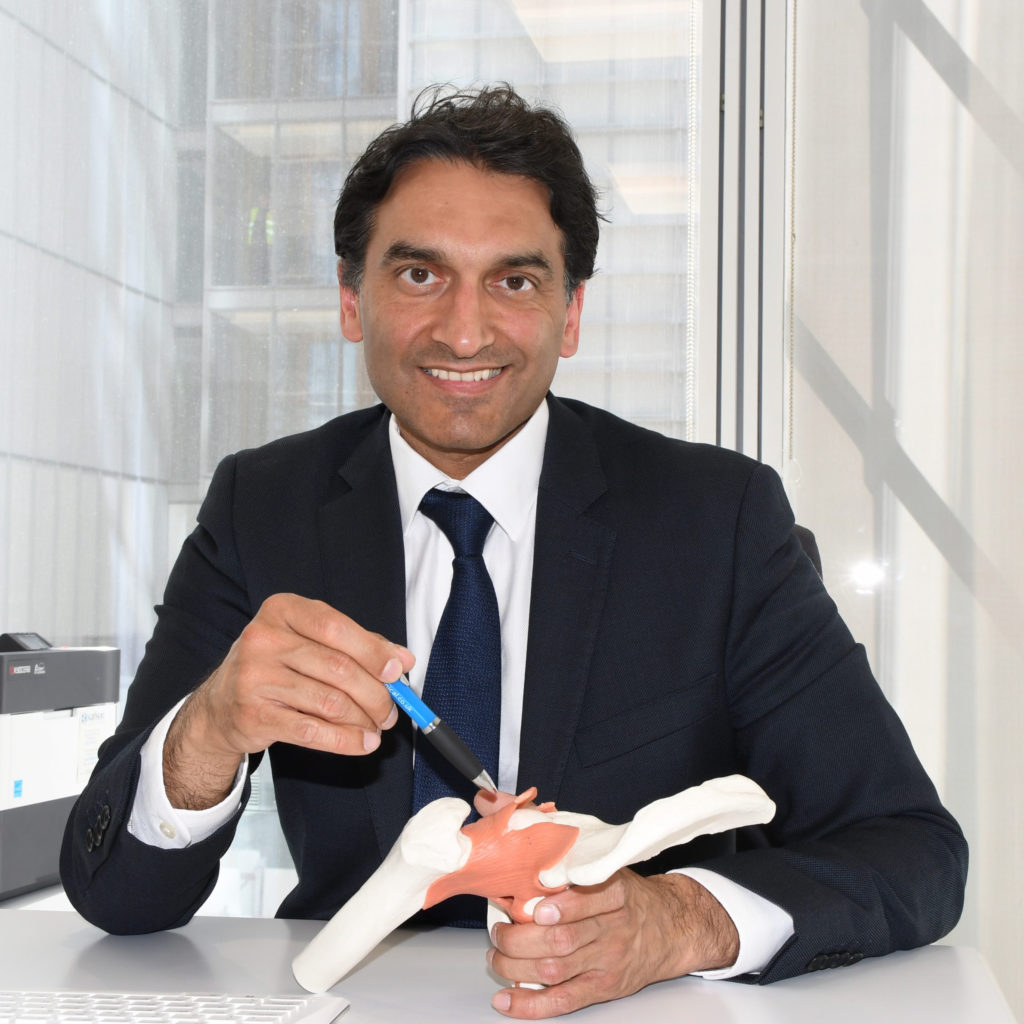
Know your Knee:
WHAT ARE THE TYPES OF ACL INJURIES?
Mr Vipin Asopa, Consultant Hip & Knee Surgeon, February 2025
About the anterior cruciate ligament (ACL)
The Know your Knee blog series focuses on delving into knee pain, injuries, conditions, surgery and more. For this post, I would like to focus on anterior cruciate ligament (ACL) injuries.
Located in the knee, the anterior cruciate ligament (ACL) can tear or rupture when playing football or tennis, while skiing, while taking part in other sporting activities that involve a lot of quick stopping and turning movements, or during sports that involve a lot of jumping and landing abruptly.
ACL injuries can occur from non-sporting activities too, for example activities at work that may require repetitive movements such as stopping and turning the body abruptly.
Some people may sustain a partial tear of the ligament. For others, the ACL may rupture, also known as a complete tear. I have explored the types of ACL injuries here:

HEALTHY KNEE
This diagram shows what a healthy knee looks like. The four ligaments in the diagram, including the Anterior Cruciate Ligament, are all there to support the knee and ensure it’s stability, and they connect the femur bone above the knee, to the tibia bone which is located below the knee.

ACL PARTIAL TEAR
When the ACL is partially injured as shown in the diagram, the knee can continue to remain stable. For people who have been diagnosed with a partial tear, non-operative treatment could be successful.
It is however a possibility that patients with a partial tear will go on to have a complete tear of their ACL. A study of 41 patients with a partial ACL tear and were under 30 year olds who actively played sports, found that 39% of them went on to have a complete ACL tear within an average of 43 months. [National Library of Medicine].

ACL RUPTURE/COMPLETE TEAR
Here we take a look at a ruptured ACL. As you can see, the ligament has a complete tear. If the anterior cruciate ligament is completely ruptured this could cause the knee to become unstable. When this happens, because the ligament is unable to heal by itself, ACL surgery may be required to reconstruct the torn ligament to improve stability. Some surgeons may repair a ruptured ACL rather than carry out a reconstruction.

RECONSTRUCTION OF THE ANTERIOR CRUCIATE LIGAMENT
The aim of ACL surgery is to bring back stability in the knee and for the patient to be able to return to sporting activities in time. The surgery may be performed by replacing the damaged ACL with other tendons’ tissues, such as the hamstrings or patella tendon. This is called reconstruction of the ACL.
To read more Know your Knee blog posts, go to: https://ortho-surgery.uk/index.php/know-your-knee-blog/

Mr Vipin Asopa, PhD, FRCS (Tr & Orth), MBChB, BSc (hons)
Specialist Consultant Hip and Knee Surgeon in London, with a particular focus on hip pain, knee pain and sports injuries.
Mr Asopa performs numerous surgical procedures including hip and knee joint replacements, arthroscopy, ACL surgery, as well as treating arthritis, ligament injuries, trochanteric pain and more.
To book an appointment with Mr Asopa:
Call: +44 (0) 794 319 1592 | Email: admin@ortho-surgery.uk